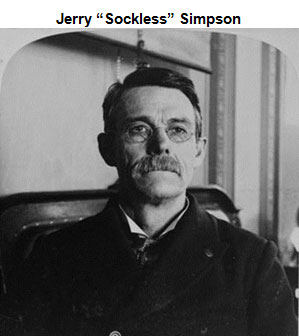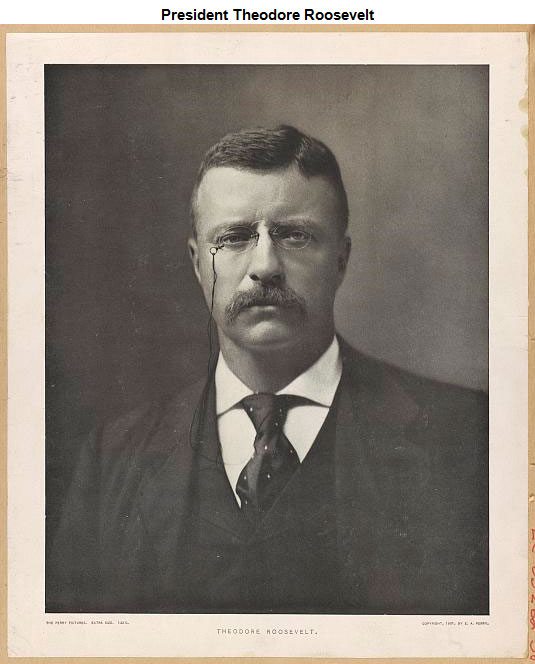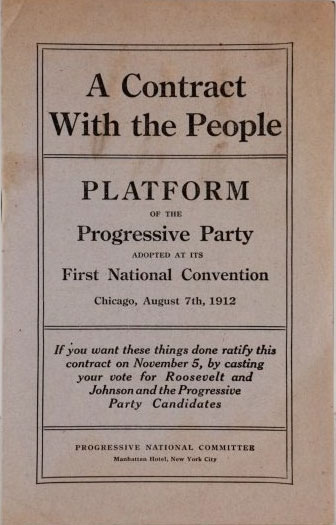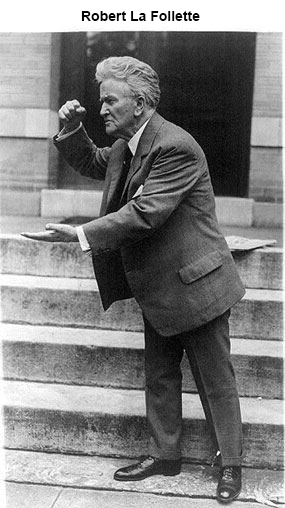
During the Progressive Era, some reform seekers felt that neither the Republican Party nor the Democratic Party was adequately addressing the need for social, political, and economic reforms. This dissatisfaction led to the creation of third parties, including the Populist and Progressive parties.

One of the political parties of this time was the Populist Party. The Populists were mainly farmers from the West and the South. The members of this party were united to provide support for fellow farmers. In 1892, the Populist Party nominated James B. Weaver for president and developed a platform that urged government ownership and operation of the railroad, telegraph, and telephone systems.
Grover Cleveland, the Democratic candidate, won the presidential election of 1892; but the Populist candidate, James Weaver, did remarkably well, winning in five states. Through the 1890s and early 1900s, Populists served in state and local offices as well as in Congress. Jeremiah Simpson, nicknamed “Sockless Jerry” Simpson, (pictured above), represented Kansas and was a leading Populist in the U.S. House of Representatives.

In 1901, Theodore Roosevelt assumed the presidency after the assassination of President William McKinley. Roosevelt soon became one of the most prominent figures of the Progressive movement. Known as the “trust-buster,” Roosevelt worked towards reforming the monopolistic practices of large businesses.
Roosevelt did not seek reelection in 1908. He instead endorsed fellow Republican William Howard Taft, who went on to win the presidency. However, in the years that followed, Roosevelt came to believe that President Taft did not pursue progressive ideals strongly enough.

Roosevelt competed against Taft for the Republican nomination for president in the election of 1912. Failing to win the nomination, Roosevelt then became the presidential candidate of the newly-formed Progressive Party. The platform of the Progressive Party focused on tax reform, tighter regulations on industries, and the prohibition of child labor. The Progressive Party also supported women's’ suffrage. Roosevelt and Taft split the Republican voters in the election, enabling the Democratic candidate, Woodrow Wilson, to win the presidency.

The Wisconsin Idea was a model for political reform in the United States during the Progressive Era. As the Republican governor of Wisconsin, Robert La Follette promoted the idea of direct primaries in the selection of nominees for public office. As he became a strong proponent of progressivism, Robert La Follette fought for tax reform, the regulation of railroads, and the implementation of initiative and recall reforms.
La Follette was elected to the U.S. Senate in 1905, and he held that position until his death. In 1924, he ran for president on the Progressive ticket and received almost 5 million votes, losing to Republican Calvin Coolidge. La Follette died the following year.
Progressive reformers expanded the role of government in regulating the economy and preventing abusive practices by big business. Through measures such as the initiative and referendum, they enabled citizens to participate more directly in the legislative process. Constitutional amendments authorized an income tax, provided for the direct election of senators, and extended the vote to women. The Populist Party and Progressive Party were both third parties that championed reform.
Sources for images used in this section, as they appear, top to bottom: